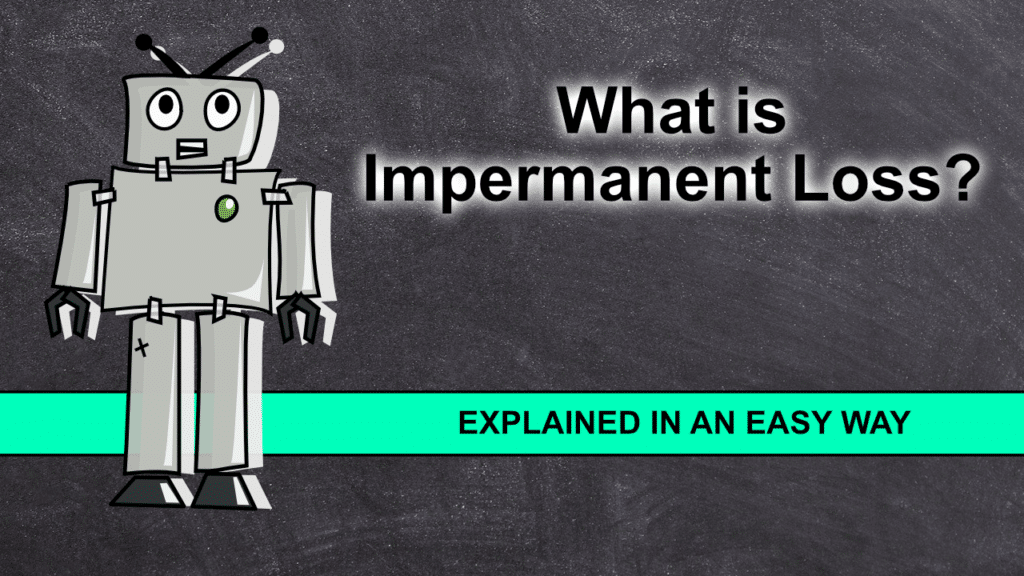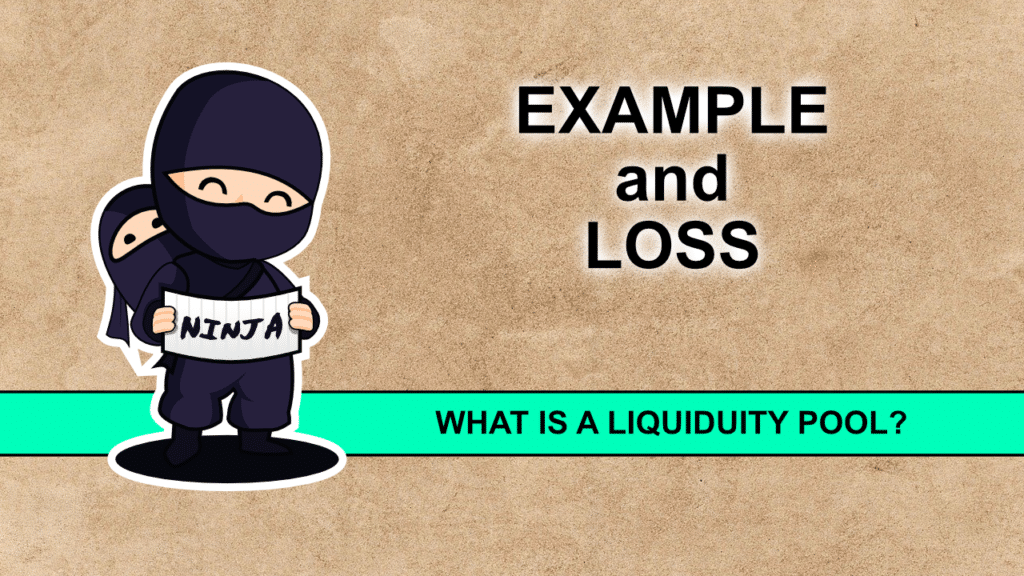Have you heard about Impermanent Loss? What is it all about? Maybe you have read articles explaining the concept several times, but you are still having a hard time really understanding it? In this short article, I will do my best to explain the concept of impermanent loss in a very easy-to-understand way, illustrated with a real example.
I will discuss the topic of impermanent loss seen from a cryptocurrency perspective, and then especially thinking about how this can influence your money (your crypto) as you add funds to liquidity pools. After all, many people add funds to liquidity pools in order to get rich, but it is important to understand that there is a risk involved as well. So, what is this all about?
Understanding impermanent loss
When you add funds to a liquidity pool, it is important to understand that it normally will consist of two tokens, both present with 50% of the liquidity pool. For the sake of an easy example, let us imagine the following liquidity pool consisting of EXAMPLE tokens (priced $1 per piece) and LOSS tokens (currently worth $2 per token).
In order for the tokens to be present with 50% each in the liquidity pool (and have a total value of $1000 for the sake of this example), we need to add the following.
- $500 worth of EXAMPLE tokens – that is, 500 EXAMPLE tokens
- $500 worth of LOSS tokens – that is, 250 LOSS tokens
At this moment, the tokens are present with this setting in the liquidity pool. You will now receive a tiny percentage of the fees paid whenever people do trades with the EXAMPLE/LOSS trading pair. This is what might give you a nice plus (income) and if you even add your LP tokens (that you receive once you have added your tokens to the liquidity pool) to some sort of farm, then you might get even more rewards.
It sounds good so far, doesn’t it? But, let us stop for a second and see what can happen next.
A fantastic scenario – an example of how a liquiduity pool can work!
Let us say that both tokens suddenly double their price, meaning that the price per EXAMPLE token suddenly is $2 and the price per LOSS token is $4. What has happened, You still have exactly 500 EXAMPLE tokens and 250 LOSS tokens in the liquidity pool, but the tokens are worth $2000 instead of $1000. Besides this, you have probably earned a little bit because of the transaction fees as well.
Let us make it a little bit more complicated – but still positive
People don’t care so much about the LOSS token, but they are really buying the EXAMPLE token. As a result, the liquidity pool is receiving lots of LOSS tokens (as people are selling those), and it has to give away EXAMPLE tokens (as people are buying those). What has happened? The liquidity pool has changed a bit, and the rate between EXAMPLE/LOSS has changed since you entered the liquidity pool.
If you withdraw at this time, you will not receive 500 EXAMPLE tokens and 250 LOSS tokens. Instead, you will receive more LOSS tokens in return and fewer EXAMPLE tokens. This is to always keep the liquidity pool stable. As long as the token price of both tokens has increased, you will still be in plus, but you would have been in an even bigger plus if you had kept your EXAMPLE tokens and not added them to the liquidity pool.
A not so positive scenaria – understanding how a liquidity pool can work (negatively)!
It is a very red day and all the markets are collapsing. People are selling all sorts of tokens, and the same is true for EXAMPLE and LOSS. In fact, the current price of the EXAMPLE token is $0.5 and the price of the LOSS token is $1. They have exactly halved in price. What has happened to your money?
- If you withdraw your tokens, you will still receive 500 EXAMPLE tokens and 250 LOSS tokens (plus some extra tokens that you have earned because you added funds to the pool). But, the tokens have halved their price, meaning that they are now only worth $500 USD in total.
This is a very easy-to-understand example. But, let us make it a little bit more complicated.
LOSS is having a terrible day
Can you imagine what happened to LOSS? The owners dumped all their tokens and the price of a LOSS token dropped to $0.2 (and you bought it at $2). The price of EXAMPLE is still $1. What will happen if you leave the liquidity pool after this?
- When you leave the liquidity pool, you will receive something like 100 EXAMPLE tokens and 500 LOSS tokens. That is what the balance between the tokens look like in the liquiduity pool at this moment. The 500 LOSS tokens are worth $100 and your 100 EXAMPLE tokens are worth $100. As a result, your original investment of $1000 is suddenly worth only $200.
The example above is not accurate, it is only meant to describe the concept of impermanent loss in an easy-to-understand way.
It might sound cool to receive 500 LOSS tokens, but considering the major decrease in value, you will be at a major loss due to entering a liquidity pool in which one of the tokens suffered greatly from bad news or something else.
Two real-life examples of impermanent loss
Below I will show you two examples of what can happen as you add funds to liquidity pools. One of them will show an example of impermanent loss, while the other will actually show you a profitable example (in which there was no impermanent loss). However, remember that you will only actually experience impermanent loss when you remove the funds from the liquidity pool. As long as you keep them there, you will earn transaction fees, and if the token price of both tokens should increase and go above the level at which you entered, you will suddenly be in a plus again.
Above you can see an image presenting two different positions in liquidity pools.
- The first shows a person adding liquiduity to the AVAX-PEFI pool on JoeTrader.
- Originally the person adding 14.38 AVAX tokens and 407 PEFI tokens (then worth $1800).
- Since then, the price of AVAX and PEFI has dropped, but the PEFI price has dropped even more.
- As a result, if the person would remove the funds from the liquiduity pools, he would receive 10.6 AVAX tokens and 561 PEFI tokens (totally worth $1,178).
The second example is when the person added funds to the BOOFI-PEFI liquidity pool on JoeTrader.
- He added 840 BOOFI tokens and 406 PEFI tokens to the pool.
- The price of BOOFI increase, while the price of PEFI dropped. However, the totality is in plus, and adding the trading fees, the final result is a plus.
- However, if you would leave the liqiduity pool at this time, you would only receive 746 BOOFI tokens and 473 PEFI tokens.
Those are examples that will help you understand more about the principles of using liquidity pools and also about the concept of impermanent loss.
If you have any questions or comments, please use the comment field below. I would love to hear from you!


